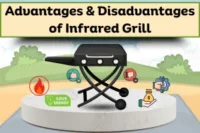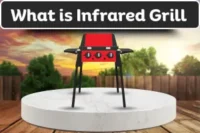Types of Gas Grills – Find the Perfect Grill for Your Backyard
Published: 14 Sep 2025
If you love grilling, a gas grill can be your best friend. They start quickly, cook evenly, and save time. But here’s the catch—there are different types of gas grills. Each type is designed for a specific space and cooking style. From portable models to built-in units, the options are wide. Let’s explore the main types of gas grills and see which one is right for you.
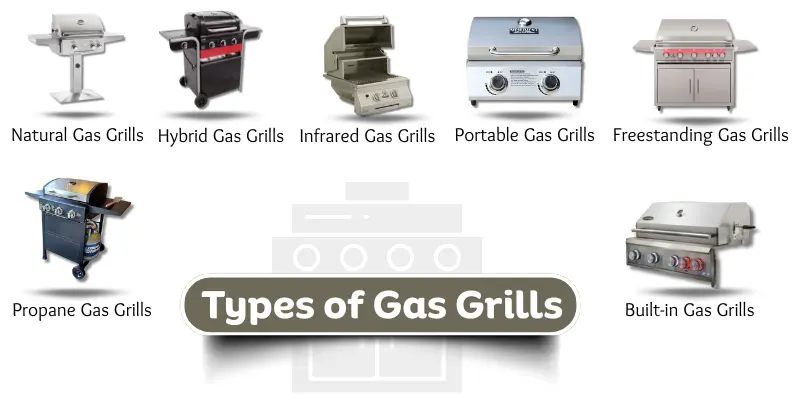
Types of Gas Grills
Gas grills come in many styles, and each one fits a different cooking need. Some are great for travel, while others are built for outdoor kitchens.
Here are the main types of gas grills:
- Natural Gas Grills
- Propane Gas Grills
- Hybrid Gas Grills (Gas + Charcoal)
- Infrared Gas Grills
- Portable Gas Grills
- Built-in Gas Grills
- Freestanding Gas Grills
Now, let’s go through these gas grill types with their pros and cons for a clear understanding.
Natural Gas Grills
Natural gas grills hook up straight to your home’s gas line. They give steady fuel and save you from refilling tanks. But once installed, you can’t move them around easily. These grills are best if you want convenience and plan to grill in one spot.
| Benefits |
|---|
|
| Drawbacks |
|---|
|
Propane Gas Grills
Propane gas grills use tanks, so they don’t need a fixed gas line. You can place them anywhere, from patios to campsites. The tanks are easy to refill or swap, which makes them very convenient. These grills are a top choice for people who want flexibility.
| Pros |
|---|
|
| Cons |
|---|
|
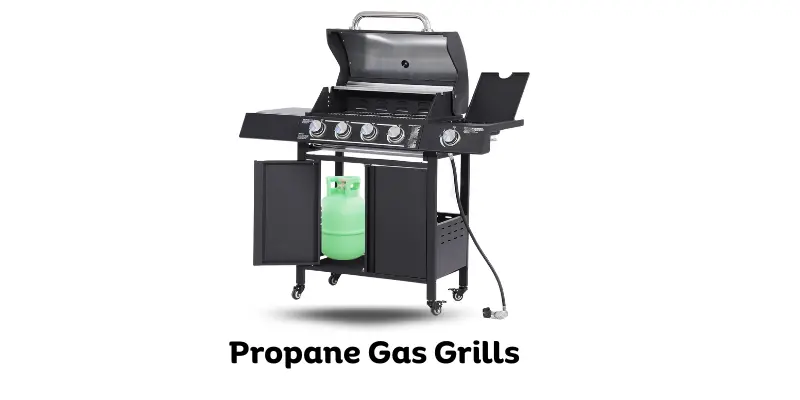
Hybrid Gas Grills (Gas + Charcoal)
Hybrid gas grills give you the best of both worlds. You can cook fast with gas or enjoy a smoky flavor with charcoal. They are flexible and fun to use, but they usually cost more than regular grills. This type is great if you want variety in your cooking.
| Pros |
|---|
|
| Cons |
|---|
|
Infrared Gas Grills
Infrared gas grills use special burners that create intense heat. They cook food fast and give a perfect sear, just like in restaurants. These grills are great for steaks and burgers, but they can be pricey and tricky for slow cooking.
| Advantages |
|---|
|
| Disadvantages |
|---|
|
Portable Gas Grills
Portable gas grills are compact and easy to carry. They work well for camping, tailgating, or small patios. You can set them up fast and enjoy grilling anywhere. But their small size limits how much food you can cook at once.
| Advantages |
|---|
|
| Disadvantages |
|---|
|
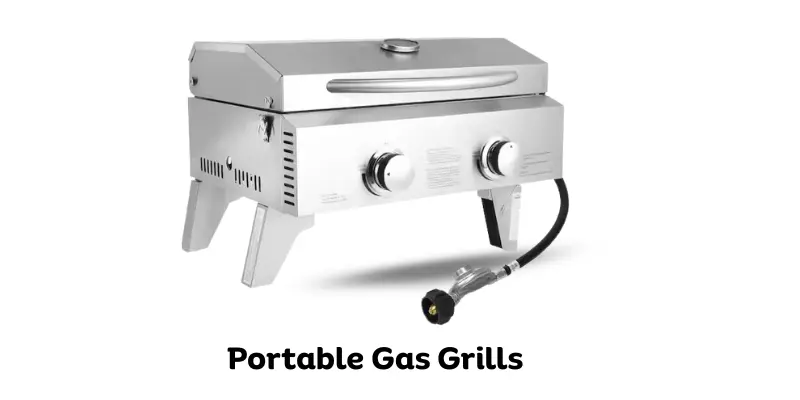
Built-in Gas Grills
Built-in gas grills are made for outdoor kitchens. They look stylish and become a permanent part of your patio. These grills are perfect for serious grillers who cook often, but they need space and cost more to install.
| Pros |
|---|
|
| Cons |
|---|
|
Freestanding Gas Grills
Freestanding gas grills are the most common type. They stand on wheels, so you can move them around your backyard. They come in many sizes and price ranges, making them a flexible choice for most families.
| Benefits |
|---|
|
| Drawbacks |
|---|
|
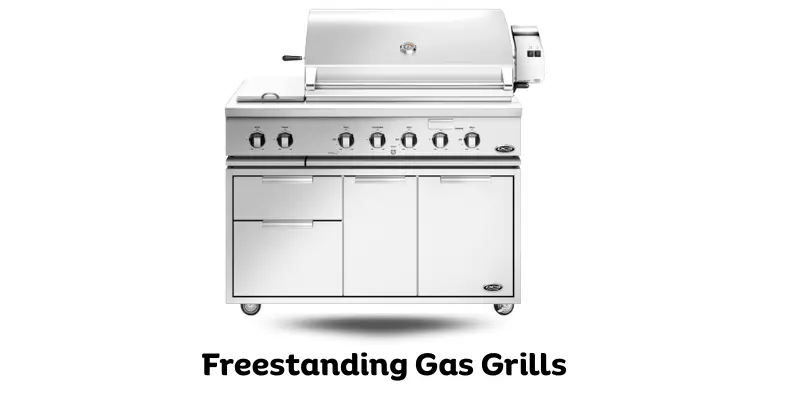
Conclusion
Alright, guys, now let’s finish this topic. We have explored the main types of gas grills in detail. Each grill has its own features and benefits. Some are perfect for small spaces, while others are built for serious outdoor cooking. The right choice depends on your lifestyle. Pick the one that matches your needs and start grilling with confidence today.
FAQs about Types of Gas Grills
Many people wonder which type suits their space and cooking style. These FAQs answer the most common questions about types of gas grills and help you pick the best one.
There are several types of gas grills. Natural gas grills connect to a home gas line. Propane grills use tanks and are portable. Hybrid grills let you cook with gas or charcoal. Infrared grills give high heat. Portable, built-in, and freestanding grills are also common choices.
Portable gas grills are perfect for small spaces. They are lightweight and easy to store. Propane grills are also a good option because they don’t need a gas line. Built-in and freestanding grills need more space, so avoid them for small patios or balconies.
No, natural gas grills are usually fixed to a home gas line. They are not portable. If you want mobility, a propane or portable grill is a better choice. These can be moved around your patio or taken on trips.
Hybrid grills cost more, but they offer flexibility. You can cook with gas for convenience or charcoal for smoky flavor. If you enjoy experimenting with recipes, a hybrid grill is worth it.
Freestanding or built-in gas grills work best for large families. They have big cooking areas and can handle multiple dishes at once. Portable grills are too small for big gatherings. Infrared grills are great for quick sears but may not cook large quantities easily.
Infrared grills cook food very fast and give a restaurant-style sear. They heat evenly and reduce flare-ups. However, they can burn food if you’re not careful. Regular propane or natural gas grills are better for low-and-slow cooking.
Yes, many propane grills can be converted to natural gas using a conversion kit. You need to follow the manufacturer’s instructions carefully. This can save money on fuel in the long run and give you a permanent grilling setup.

- Be Respectful
- Stay Relevant
- Stay Positive
- True Feedback
- Encourage Discussion
- Avoid Spamming
- No Fake News
- Don't Copy-Paste
- No Personal Attacks



- Be Respectful
- Stay Relevant
- Stay Positive
- True Feedback
- Encourage Discussion
- Avoid Spamming
- No Fake News
- Don't Copy-Paste
- No Personal Attacks

